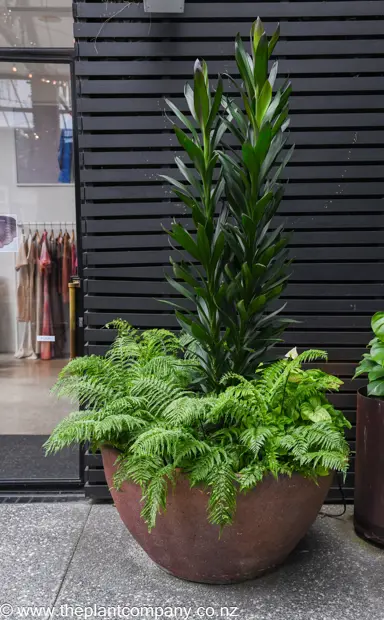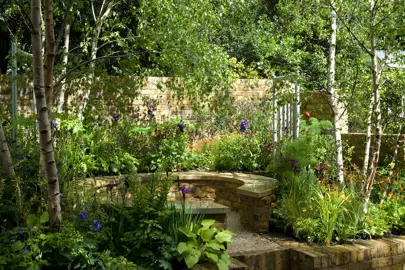
The Plant Company grows, sells, and ships Stachys plants throughout NZ. We pride ourselves on producing high quality plants and seeing the joy from our customers when they receive them. We do hope you enjoy them and support this NZ business that is passionate about Stachys plants.
Stachys byzantina, commonly known as Lambs Ear, is a low-growing, evergreen perennial valued for its soft, silvery foliage that resembles lambs’...
Stachys macrantha is a lovely herbaceous perennial grown for both its flowers and foliage. This small plant produces masses of pink-purple flowers on...
Stachys byzantina 'Big Ears' is a striking, low-growing perennial known for its oversized, velvety silver leaves that resemble lambs’ ears. This...
Stachys discolor is a lovely herbaceous perennial which is grown for both its flowers and foliage. This small plant produces masses of tiny, white...
Stachys lanata, commonly known as Lambs Ear, is a hardy, low-growing perennial admired for its soft, silvery foliage that adds texture and contrast...
Stachys 'Limelight' is a vibrant and eye-catching perennial known for its bold lime-green foliage and soft, textured leaves. It forms a low, dense...
Stachys 'Silver Carpet' is a low-growing, non-flowering variety of Lambs Ear prized for its dense mat of velvety, silver-grey foliage. It forms a...
Growing these plants delivers a vast range of benefits:
We have a wide range of Stachys varieties of all sizes and colours that are ready for their new home. We are here to help you find the right Lambs-ear plant for your space. Choose from a wide variety of locally grown plants that have been propagated and bred to thrive in NZ’s climate. We stock only the highest quality plants, sourcing them from NZ’s leading nurseries. Each plant is packed and transported with extreme care, ensuring it arrives to you in the same condition it was in when it left the nursery. If you are wanting to buy Stachys, shop with confidence from the best in the industry.
Stachys plants have a variety of common names, depending on the species and region. Some of the most common names include:
In addition to these common names, there are also many regional and dialectal names for Stachys plants. For example, in some parts of the United Kingdom, Stachys plants are called "dead-nettle," while in other parts of the world they are known as "woundwort."
Yes, you can grow Stachys plants from seed. The process is relatively straightforward and can be done indoors or outdoors.
Here's a general guide on how to grow Stachys from seed:
Yes, Lamb's Ear (Stachys byzantina) is an easy-to-grow plant that is known for its soft, velvety leaves and tolerance for a wide range of conditions. It is a popular choice for flower beds, borders, and groundcover.
Here are some of the reasons why Lamb's Ear is considered easy to grow:
Overall, Lamb's Ear is a low-maintenance, adaptable, and versatile plant that is well-suited for gardeners of all levels of experience. Its soft, velvety leaves and easy-going nature make it a popular choice for gardens and landscapes.
Lamb's Ear (Stachys byzantina) has several potential benefits for human health. Traditionally, it has been used in herbal medicine for a variety of conditions, and some of its purported benefits are supported by scientific research.
It is important to note that scientific evidence for some of these benefits is limited, and more research is needed to fully understand the health effects of Lamb's Ear. Additionally, it is always recommended to consult with a healthcare professional before using any herbal remedy, as there may be potential interactions with medications or other health conditions.
Some species of Stachys are considered invasive in certain regions, while others are not. For example, Stachys arvensis, also known as field woundwort, is a native plant of Europe and Asia but has become invasive in North America and other parts of the world. It is a prolific spreader and can quickly take over fields, pastures, and other open areas.
Another invasive species is Stachys sylvatica, also known as wood woundwort. This plant is native to Eurasia and has been introduced to North America, where it is considered invasive in some areas. It is similar in appearance to Stachys arvensis and can also spread rapidly.
However, not all Stachys species are invasive. For example, Stachys byzantina, also known as lamb's ear, is a popular garden plant that is not considered invasive in any region. It is a well-behaved plant that does not spread aggressively and is not a threat to native plant communities.
The germination period for lamb's ear seeds can vary depending on the species and environmental conditions. However, in general, it takes about 2 to 4 weeks for lamb's ear seeds to germinate.
Here are some fun facts about lamb's ear (Stachys byzantina):
Overall, lamb's ear is a versatile, attractive, and easy-to-grow plant that offers beauty, wildlife value, and potential health benefits. It is a popular choice for gardens and landscapes worldwide.
Whether you need assistance finding the plant you’re looking for or you simply want to know more about who we are and what we do, we invite you to get in touch with us today. A member of The Plant Company team will get back in touch as soon as possible.


